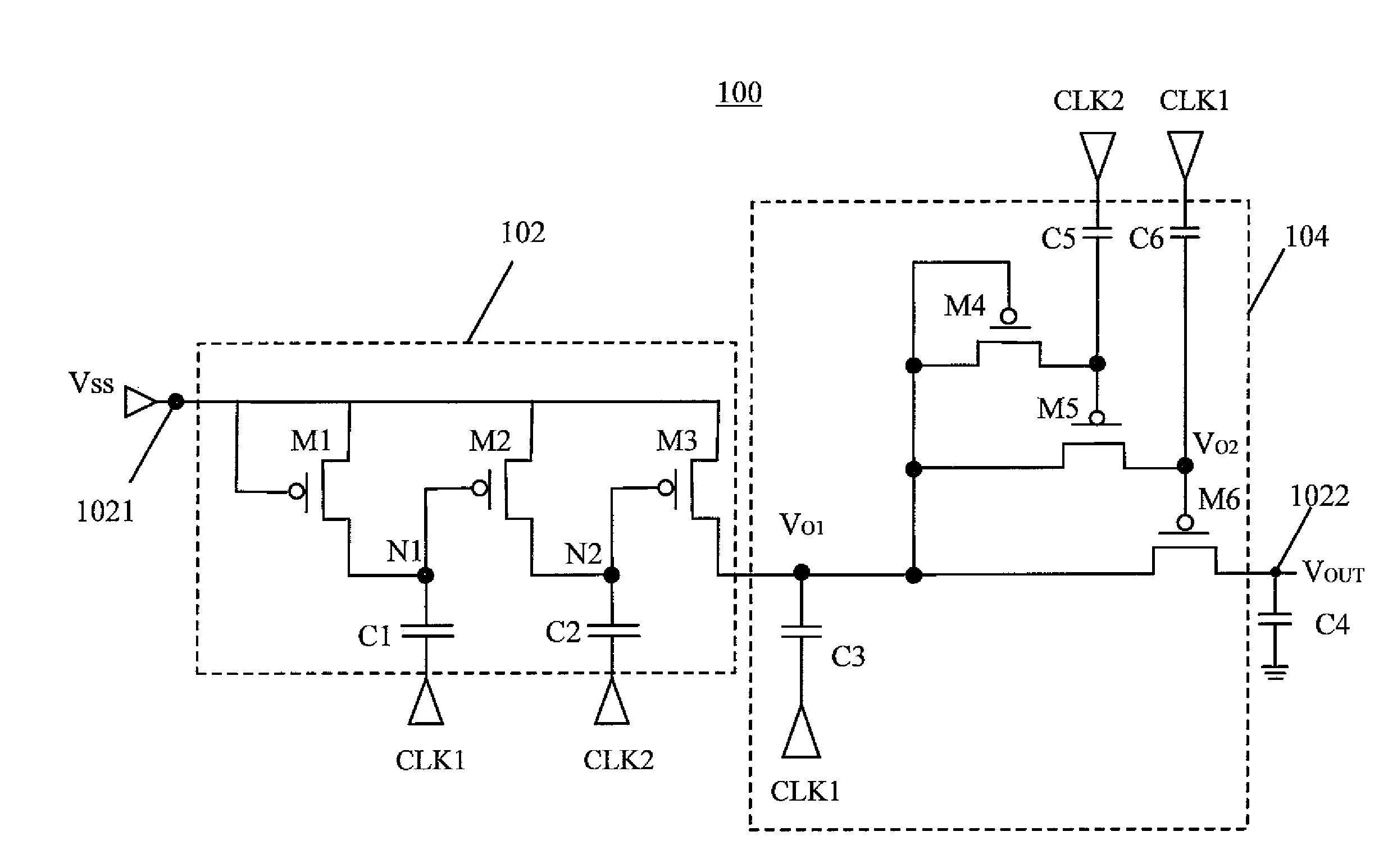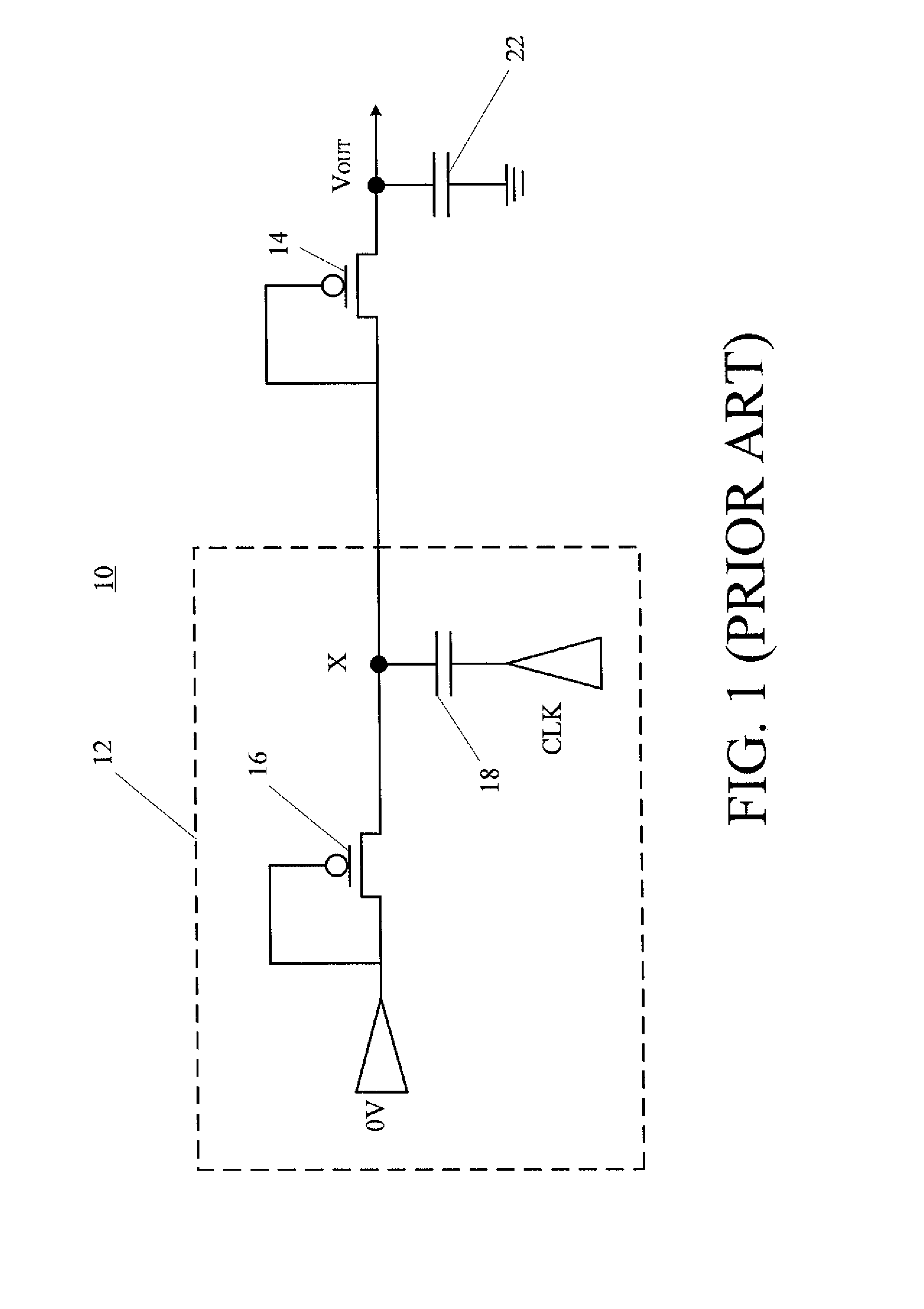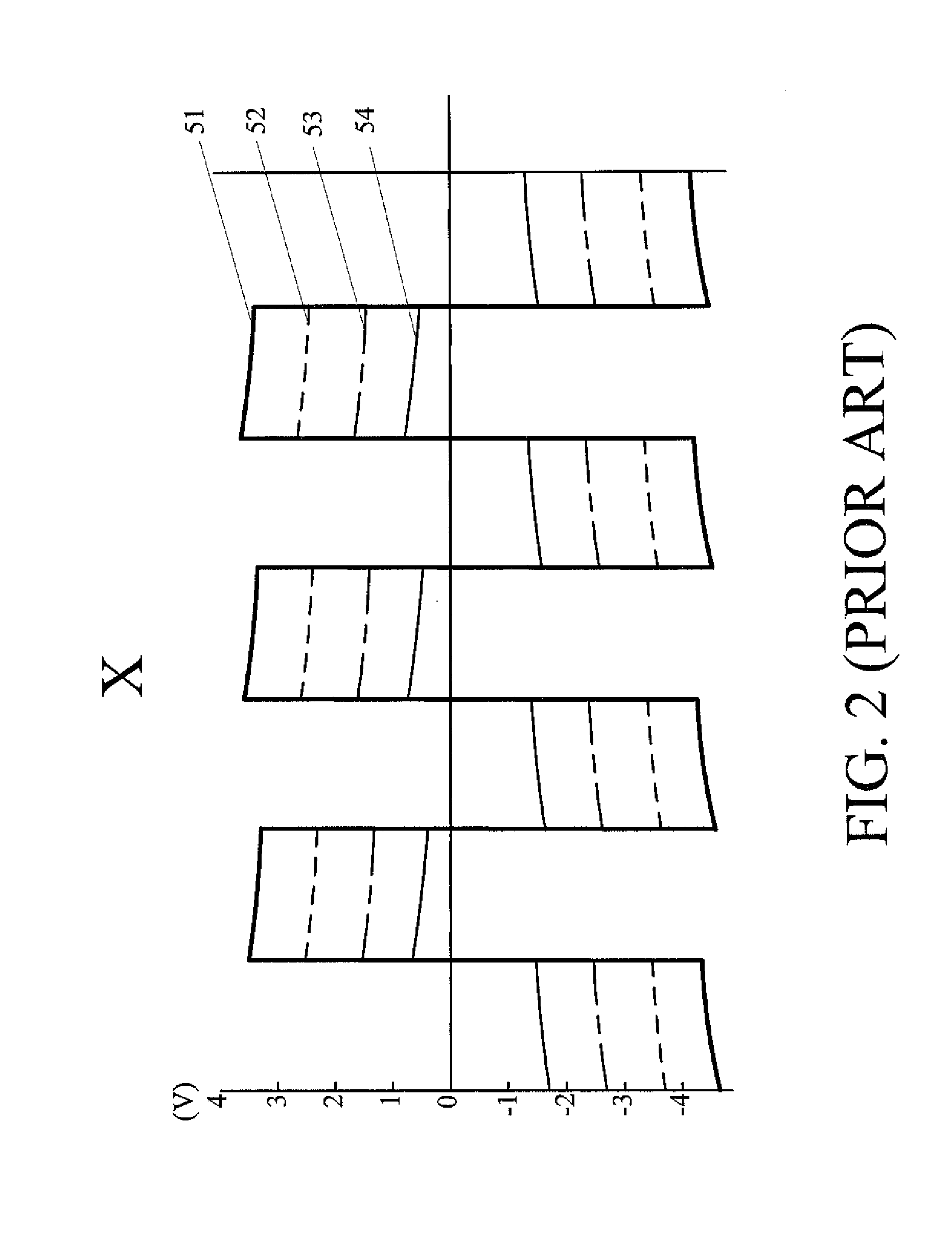Negative voltage converter
a negative voltage converter and converter technology, applied in the direction of power conversion systems, dc-dc conversion, instruments, etc., can solve the problems of increasing the complexity of design, different threshold voltages of p-type tft, and reducing the yield of products accordingly
- Summary
- Abstract
- Description
- Claims
- Application Information
AI Technical Summary
Benefits of technology
Problems solved by technology
Method used
Image
Examples
Embodiment Construction
[0021]FIG. 4 shows a circuit diagram of a negative voltage converter 100 according to a first preferred embodiment of the present invention. The negative voltage converter 100 comprises an input circuit 102 for delivering a DC voltage Vss applied on a signal input end 1021 to the voltage amplifying circuit 104, and a voltage amplifying circuit 104 for amplifying the DC voltage Vss to a required negative voltage at a signal output end 1022.
[0022]The voltage amplifying circuit 102 comprises a first transistor M1, a second transistor M2, a third transistor M3, each of which may be implemented by a P-type TFT. A control end of the first transistor M1 connects with the signal input end 1021 of the negative voltage converter 100. A first end of the first transistor M1 is electrically coupled to the signal input end 1021. A first end of the second transistor M2 is also electrically coupled to the signal input end 1021. A control end of the second transistor M2 is electrically coupled to a ...
PUM
 Login to View More
Login to View More Abstract
Description
Claims
Application Information
 Login to View More
Login to View More - R&D
- Intellectual Property
- Life Sciences
- Materials
- Tech Scout
- Unparalleled Data Quality
- Higher Quality Content
- 60% Fewer Hallucinations
Browse by: Latest US Patents, China's latest patents, Technical Efficacy Thesaurus, Application Domain, Technology Topic, Popular Technical Reports.
© 2025 PatSnap. All rights reserved.Legal|Privacy policy|Modern Slavery Act Transparency Statement|Sitemap|About US| Contact US: help@patsnap.com



